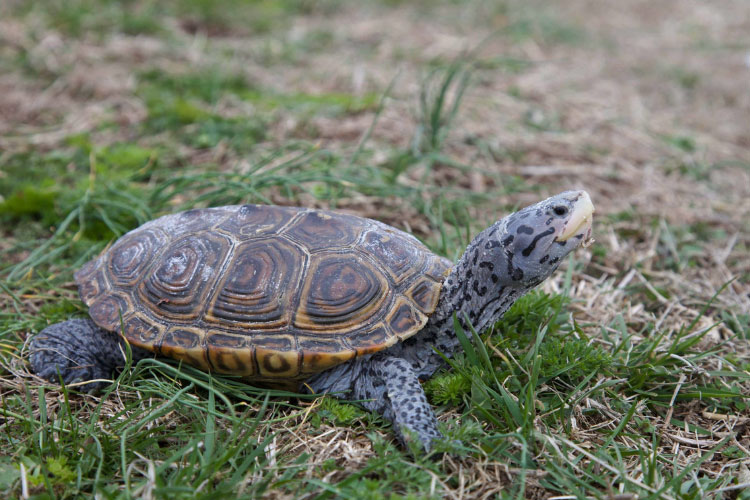Diamondback Terrapin Care: A Detailed Guide for Beginners!
From the different creatures of the water, diamondback terrapin is known to be a pretty common name among seasoned aquarists. But beginners often find it a “back-breaking” job to take care of Diamondback Terrapin for not having adequate knowledge of its diet, food habit, potential diseases, and overall lifestyle.
Here, I’ve got you covered with a comprehensive beginner guide on Diamondback Terrapin Care. I’d like to share every single piece of information regarding this friendly creature to help you look after it in the best way possible, including its feeding, breading, tank setup, health issues, etc. Are you ready to dive in?
Basic Info about Diamondback Terrapin
Contents
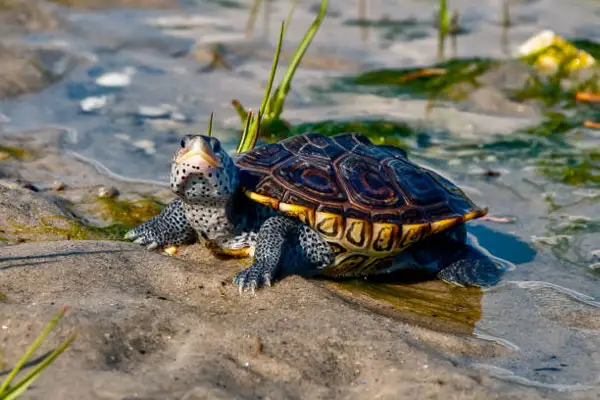
| Scientific Name | Malaclemys Terrapin |
| Common Name | Diamondback Terrapin |
| Adult Size | Male (4.5 to 5”); Female (6 to 9”) |
| Max Size | Male (5.5”); Female (11.0”) |
| Lifespan | Around 25-30 years |
| Diet | Snails, crabs, earthworms, veggies, tiny fish, prawns etc. |
| Range | 379 to 999 dollars |
| Behavior | Pretty much sociable |
| Clutch Size | Four to twenty-two eggs |
| Legal to Keep in USA | Yes |
| Extinction Status | Not extinct |
Is Diamondback Terrapin Easy to Take Care Of?
It’s comparatively easy to take care of Diamondback Terrapin, especially if you know its care guide properly. For this, it’s necessary to get familiar with terrapin’s feeding, including their breeding, nature, how they survive in a water tank, and so on.
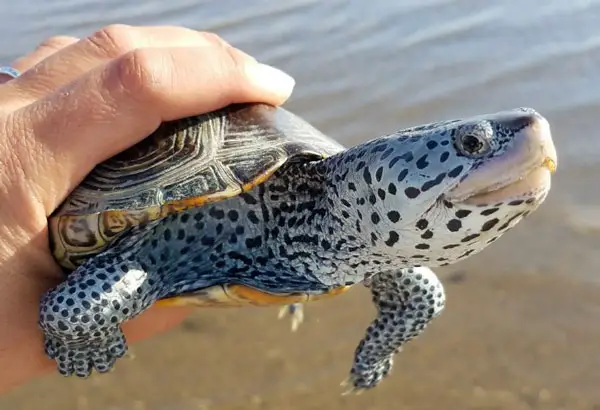
Although Terrapin sometimes doesn’t want you to handle them for being independent, you still can make them friendly and comfortable with you.
How to Take Care of a Diamondback Terrapin?
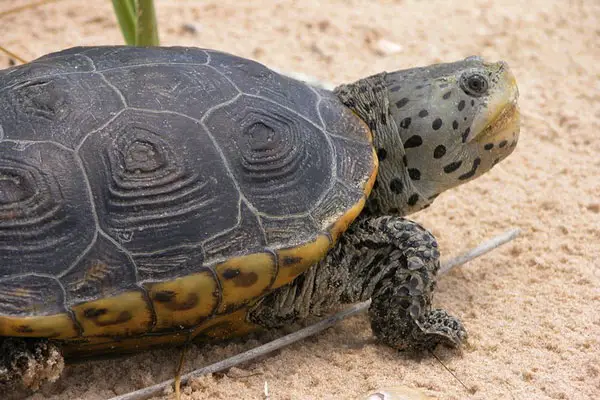
Let me cut to the chase by teaching you the best way to take care of a terrapin:
Pay Attention to the Water Parameter
Maintaining the water parameter is mandatory to ensure the best and safe health of your Terrapin. Just like other creatures or species of your tank, they also want to enjoy filtered, well-heated, and clean water to survive.
Including the 6.8-7.0 pH range, I’d suggest getting the water temperature around 76 to 78 degrees Fahrenheit to make the environment compatible with your Terrapin.
Considering the Water Quality is a Must!
Undoubtedly, smelly and cloudy water is considered to be the culprits behind the unexpected sickness of your Terrapin. So it’s a must to pick up a tank that incorporates clean water. And this is where a superior filtration system comes into play! This will aid in reducing contamination as much as possible from the water, keeping it out of the dirt.
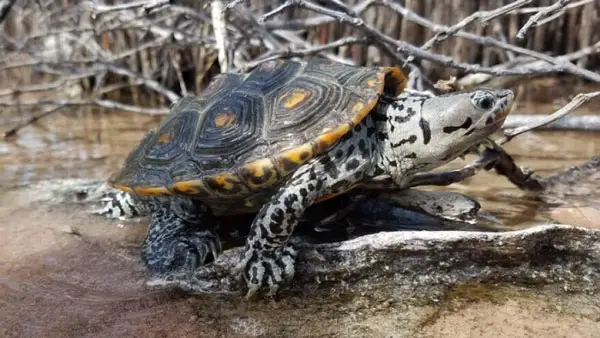
In addition to that, I’d suggest including kits for water testing in the tank. This way, you will be able to confirm whether the water has low nitrite and ammonia or not. Otherwise, they might build up undesired toxic substances and eventually result in the sickness of Diamondback Terrapin.
Make Sure the Terrapin is Eating Adequate Food
Just like us, other creatures also require adequate amounts of food on a daily basis to survive. I am not talking about overfeeding them, as it will ultimately offer negative results. Yet, it’s mandatory to be careful about whether the Terrapin is taking the right amount of food or not.
Also, it’s equally necessary to get familiar with their desired meal. Terrapin is known to be carnivorous, but it doesn’t mean they will eat up everything randomly!
What to Feed Your Terrapin?
Here, you won’t have to start scratching your head to think about what I should feed my Terrapin! Because it is pretty much comfortable with a vast collection of food, including snails, crabs, tiny fish, shrimp, frozen crayfish, prawns, and many more.
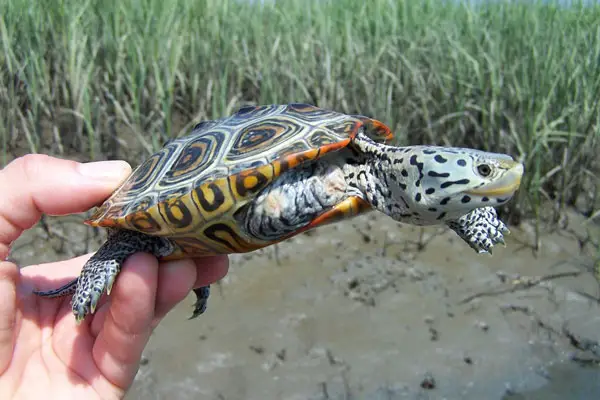
Even I’ve seen some people incorporating earthworms into the diet of Diamondback Terrapin for being very rich in protein, carbs, essential fat, and minerals. By using them, you can ensure the optimal growth of Terrapin. It’s not a bad idea to make your own Diamondback Terrapin care sheet, especially if you’re too concerned about its diet plan.
Feeding Frequency of Your Diamondback Terrapin
You should offer at least a single meal to a full-grown Diamondback Terrapin every 2 days. It’s also acceptable to feed them once a day only if their age is below 5, known to be younger.
Speaking of quantity, a single cup of food is enough for a single meal. This can be a combination of veggies, frozen crayfish, insects, or anything mentioned above.
Incorporating Tank Mates
Terrapins and fish are able to spend their lives in the same tank without any trouble. That said, there are some restrictions you need to maintain as Diamondback Terrapin can’t make a good bond with every type of species.
For instance, tetra fish, yellow cichlids, or zebrafish are common species you can incorporate in the same tank of terrapins because they won’t fight with each other. Apart from these 3, you must avoid all types of species if your prime concern is to keep terrapins.
Can You Keep Diamondback Terrapin as a Pet?
There is nothing wrong with keeping Diamondback Terrapin as pets. But for this, you need to consider the two most crucial factors, which are as follows:
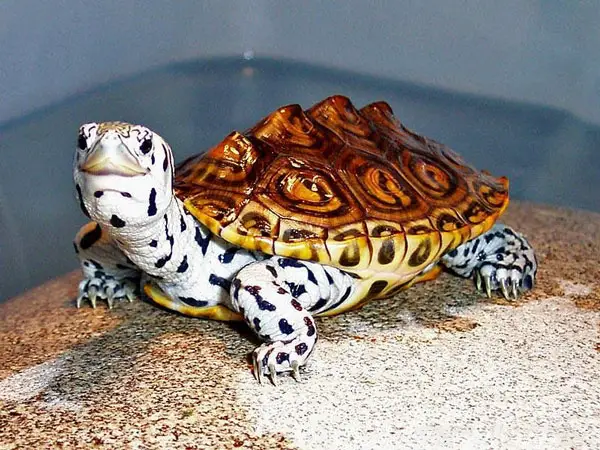
1. Know about Its Legality
Although keeping diamondback terrapin as a pet is legal in almost every state, buying it from a licensed shop is a must. Some states, like North Carolina and South Dakota strictly prohibit turtle selling/purchasing. Besides, capturing a wild terrapin and start petting it is equally illegal.
Even though some turtle owners claim that they’re allowed to pet terrapin comfortably in restricted states, I’d recommend you first get familiar with its legality before buying it.
2. Be Familiar with Its Caring Procedures
If you’re concerned about the care of Diamondback Terrapin, it’s a must to get familiar with its feeding process, including breading, cleaning the tank, and preparing it thoroughly. So, to keep it as a pet, a proper guideline requires to be looked at to overcome the complications.
What Does A Diamondback Terrapin Need in a Tank?
Tank setup is one of the most, if not the most, necessary factors to consider in terms of keeping terrapins as pets. So let’s get straight into the list of some of the “must-have” tools required in your water tank –
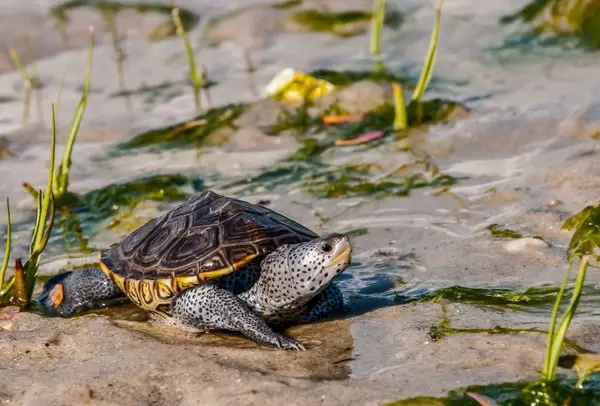
Plenty of Space
The larger the space, the more comfortable your terrapin will feel inside the tank. A more profound capacity with a combination of 75 gallons of space is necessary for the Diamondback Terrapin to dive in and swim conveniently.
Proper Filtration
Water tends to get cloudy and excessively dirty over time, especially if your tank contains plenty of different species. In this case, an efficient filter is handy to keep the water as clean as possible from toxic algae, dirt particles, and such things.
Talking about the filter sponge, you must clean it once every 3-5 days as it captures debris. And if possible, replace the old one with a new one after every 3-4 months or so.
Heater
Every species of water tank requires a specific temperature in the water to survive. As a result, don’t think twice about spending on a top-notch heater that keeps the water temperature perfect.
LED Aquarium Lighting
To ensure both safety and beauty, adding aquarium-friendly LED lights is always a good idea. Furthermore, lightings allow you to observe the interior conditions more conveniently.
Along with them, incorporating ultraviolet light is a plus in your water. Because it plays a key role in hardening the shell of terrapin, as it’s unable to penetrate via glass, experts recommend placing it inside your tank.
A Dock
Keeping a dry dock in the tank is considered optional. That said, a terrapin may find it a suitable spot to enjoy and crawl up out of the water.
Diamondback Terrapin Breeding Information
Diamondback Terrapins tend to lay eggs, being amphibian-type creatures. Moreover, they hatch in about sixty days or more and often lay around four to ten eggs at once.

Every year, a healthy diamondback terrapin can produce 25 to 40 eggs. It requires nearly six years to get into its mature form. So if your terrapin isn’t giving eggs even after being completely mature, take assistance from a vet or specialists as it might be dealing with sickness or other complications.
Potential Diseases and Ways to Prevent Them
Shell rot, viral infection, and fungal disease are the three most common health issues of diamondback terrapin. Any of them can cause improper movement, dizziness, and even death of your loving terrapin. Even sometimes, it can stop taking the food in the way it requires in case the terrapin ends up with any of these potential diseases.
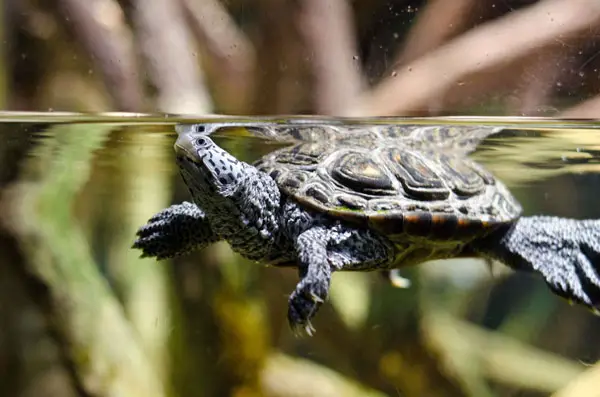
Regarding prevention, keeping the water as clean as possible is mandatory. Cleaning the water after a certain period will ensure less debris and algae build-up. However, if your Terrapin still has a disease, keep it isolated until it fully recovers.
Final Words
As a pet, Diamondback terrapin needs enough care and maintenance. So if you’re wondering about keeping at least a piece of Terrapin in your water tank, make sure to go through the entire guide of diamondback terrapin care.
Here, I tried my best to talk about all the nooks and crannies of its diet, feeding frequency, tank setup, and so on. Hopefully, you got plentiful education!


